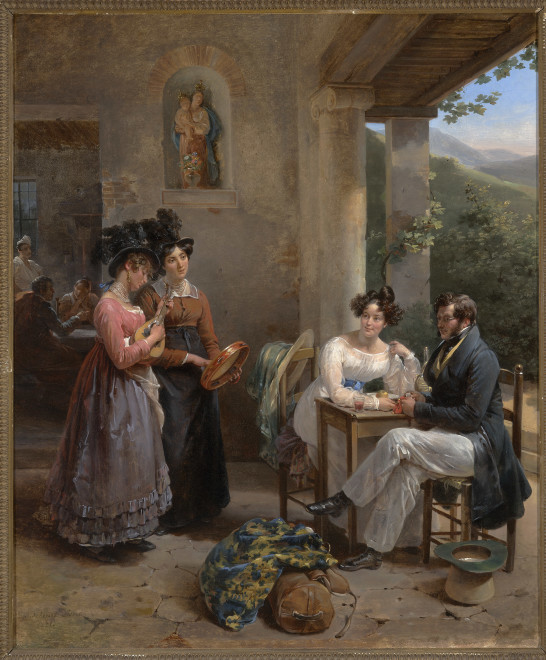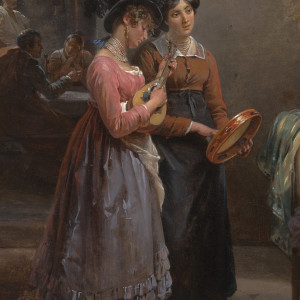“Madame Haudebourt painted by herself…. Truly, is this a painting by a woman? What firmness of tones and in the brush! This is a woman with real talent who again this year seems to have made some progress.” (Augustin Jal, Esquisses, croquis, pochades ou tout ce qu’on voudra sur le Salon de 1827, Paris, A. Dupont, 1828, p. 290)
Provenance
Shepherd Gallery, New York, 1981
Mr. and Mrs. William Koch, Boston (acquired from the above and sold, Sotheby’s, New York, 24 May 1995, lot 1)
W. M. Brady & Co., New York (acquired at the above sale)
Joan Conway Crancer, St. Louis, Missouri, 1995 (acquired from the above)
Exhibited
New York, Shepherd Gallery, French and Other European Drawings, Paintings, and Sculpture of the Nineteenth Century, Winter Exhibition, 1980-81, no. 79
Boston, Museum of Fine Arts (on loan, 1981-1995)
Catalogue note
“Madame Haudebourt painted by herself…. Truly, is this a painting by a woman? What firmness of tones and in the brush! This is a woman with real talent who again this year seems to have made some progress.” (Augustin Jal, Esquisses, croquis, pochades ou tout ce qu’on voudra sur le Salon de 1827, Paris, A. Dupont, 1828, p. 290)
Augustin Jal, in his review of Haudebourt-Lescot’s contribution to the Salon of 1827, expressed amazement at the existence of such an accomplished woman painter. He was not alone in his sentiment; Haudebourt-Lescot was unanimously praised in Paris art circles and considered an equal among her male counterparts and fellow Salon participants.
When Haudebourt-Lescot was 24 years old, she travelled to Italy to study art; she remained there for eight years having met such influential artists as Ingres and Canova. The memories of her time spent in Italy and her immersion in the Italian lifestyle remained with her after she returned to Paris in 1816. Our painting may possibly depict the artist with her husband on their wedding trip (they were married in 1820). The setting is an Italian inn where two itinerant musicians dressed in traditional costume regale their visitors with a song. The background may depict a vista of the Alban Hills. The scene is typical of many of Haudebourt-Lescot’s works, where the focus was on genre subjects or the daily lives of the people, their clothing, customs and traditions.
Haudebourt-Lescot sent a total of 110 paintings to the Salon during her thirty-year career, thereby achieving a level of recognition rarely afforded to a woman artist at the time. In 1829, she modelled for Pierre-Jean-David d’Angers, becoming a part of his pantheon of bronze portrait medallions representing the most illustrious artists and intellectuals of the era.








